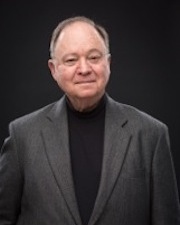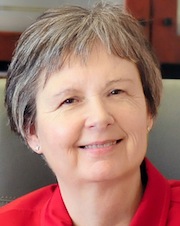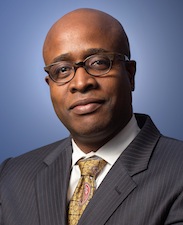Questioning the Calculations |
College Promise Programs | Donate! 


What’s AHEAD Commentary [Poll 5]
To join the discussion on these commentaries, please visit our Facebook page:
https://www.facebook.com/PennAHEAD
Higher Education Leaders: What Institutional Decisions Do They Influence?
In our fifth What’s AHEAD poll, we focused on the perceived influence of higher education leaders on various areas of institutional decision making. We invited three people to comment: Dr. Robert Zemsky of Penn AHEAD, and two Penn GSE Alumni—Drs. Barbara Risser and Roger Ward—both leading scholar-practitioners.
We Know Our Place

Robert Zemsky
Senior Scholar
Alliance for Higher Education and Democracy (AHEAD), University of Pennsylvania
There is quite a simple and direct message from the new What’s AHEAD poll: as senior managers we know our place. We are deeply involved in developing institutional strategy and have major roles to play in developing consistent and successful internal communication systems. Where our voices are much more muted, not surprisingly, is in those domains traditionally dominated by faculty voices: the approval of academic programs and the formation of research policies. Nor is it very surprising to learn that student affairs professionals, in particular, are the least likely group of senior managers to see themselves as playing influential roles in developing institutional strategies.
The question that remains—and can’t be answered—is whether senior leaders are more or less influential than they were sixty years ago. My guess is that senior administrators are playing much larger roles today, in part because they have replaced faculty as their institution’s principal managers in many areas.
Leading Transformational Change at Community Colleges
 Barbara Risser
Barbara Risser
President
Finger Lakes Community College
Community college leaders face significant challenges in 2015. More than any other sector of higher education, community colleges have experienced a significant paradigm shift in the last ten years. The pace of change on our campuses has been astonishing. As leaders, we need to work with our faculty and staff to navigate transformational change, driven primarily by external forces.
Ten years ago, community colleges faced few external pressures. Governed by local boards of trustees with little outside interference (or interest), we were flying under the radar, serving our students and our local communities. We were a "best kept secret." Money was tight, but we dealt with few mandates and could use the funds we had to support our students in the way we decided was best.
We are no longer “best kept secrets,” and for the most part that has been a good thing. President Obama has been shining a light on community colleges for his entire tenure, including holding the first Community College White House Summit and talking about community colleges in every State of the Union Address. Ten years ago, that would have been unthinkable. There is now a growing recognition that nearly half of the undergraduates in the US are at community colleges and our role as significant economic drivers has risen to the forefront.
With all of this attention come new challenges. Our energy on campus is being pulled in different directions, often responding to government mandates and ever-changing external demands for curricular changes, accountability and transparency. Trustees are angry as they see their traditional local control eroding and faculty are stressed as they face concerns about governance. We have strategic plans, but we have to work very hard to stay focused on our goals as we juggle priorities that are not our own.
Change is hard, and rapid change is a significant stress on campus culture. Still, we need to be realistic and accept that we are not going to return to the time when community colleges flew under the radar. Community college leaders need to understand, accept and guide their campuses with a steady hand toward a new reality over which we have less control than we would like. That's what keeps community college presidents up at night.
Hiding in Plain Sight: The Real Disrupters of Higher Education

Roger J. Ward
Vice President for Academic Affairs & Vice Dean, Graduate School
University of Maryland, Baltimore
Much has been written and debated lately about the forces that are “disrupting higher education.” Most of that debate, however, has centered on innovations in technology that, if you buy the argument, will revolutionize our approach to educating students. The potential impact of changes in technology on the way academic programs are designed and delivered is undeniable, and leaders in the academy would be foolish to ignore and dismiss these changes as a passing fad. I contend, however, that there is an even more potent disruptive force hiding in plain sight that academic leaders at all types of institutions need to fully appreciate: the “post-traditional learner.”
In January 2013, the American Council on Education (ACE) published what I consider a must-read for leaders in the academy—Post-traditional Learners and the Transformation of Postsecondary Education: A Manifesto for College Leaders. A post-traditional student is a working adult (25 – 64 years) who demands a postsecondary educational model that is responsive to his/her professional and personal realities. These students already constitute 85% of the total student population as opposed to the 15% of traditional students (18 – 22 years). In other words, the student population around which our business models, academic programs, policies, and strategies have been designed for centuries has been declining and continues to decline; that too is undeniable.
Leaders engaged in institutional strategy setting for the future cannot continue to ignore the impact and influence of the post-traditional learner on the higher education landscape. Further, to meet the needs of these students institutional leaders on both the administrative/operational and academic sides need to transcend the strategy-setting silos, and bring the faculty “encamped just north of Armageddon” (to borrow a phrase from Zemsky) back into the fold to lead the effort in evolving the postsecondary model. An institutional leadership model, where one set of leaders influence budget, personnel, and strategy while yet another set of leaders influence academic programs, teaching, and research will be, in my opinion, far less impactful than an integrated approach to designing a higher education model that satisfies the demands of the different types of students in the postsecondary marketplace.
To join the discussion on these commentaries, please visit our Facebook page:



